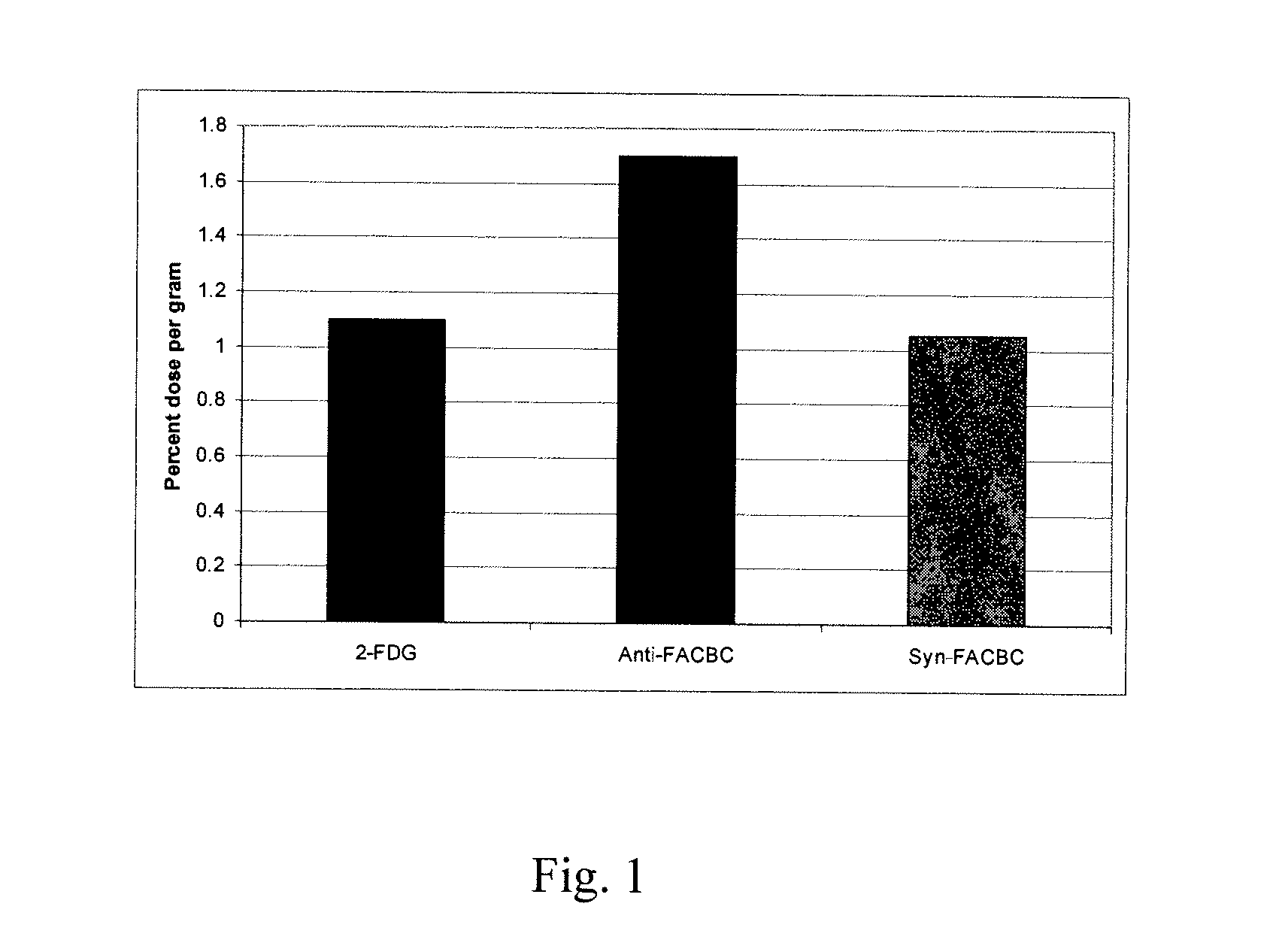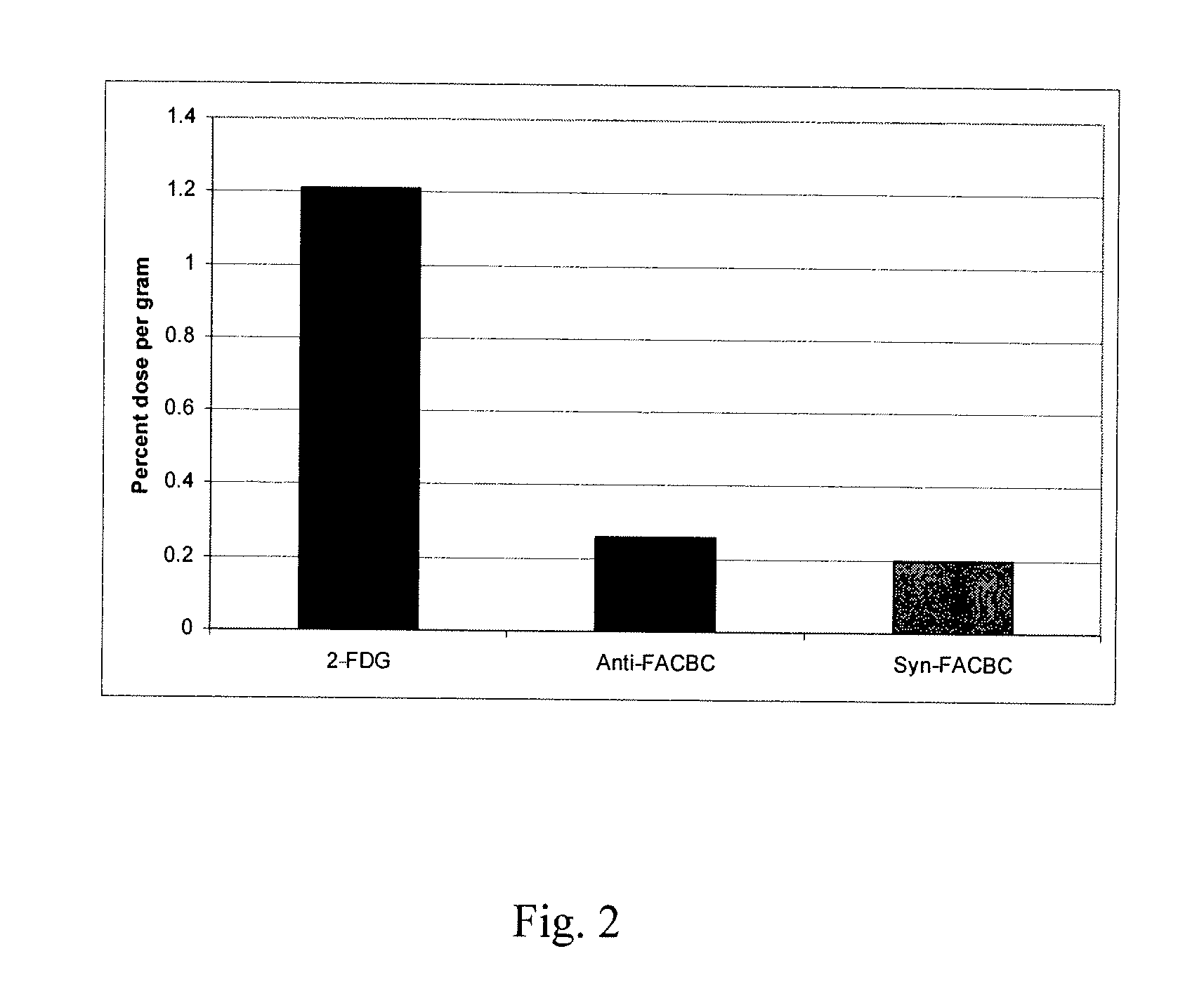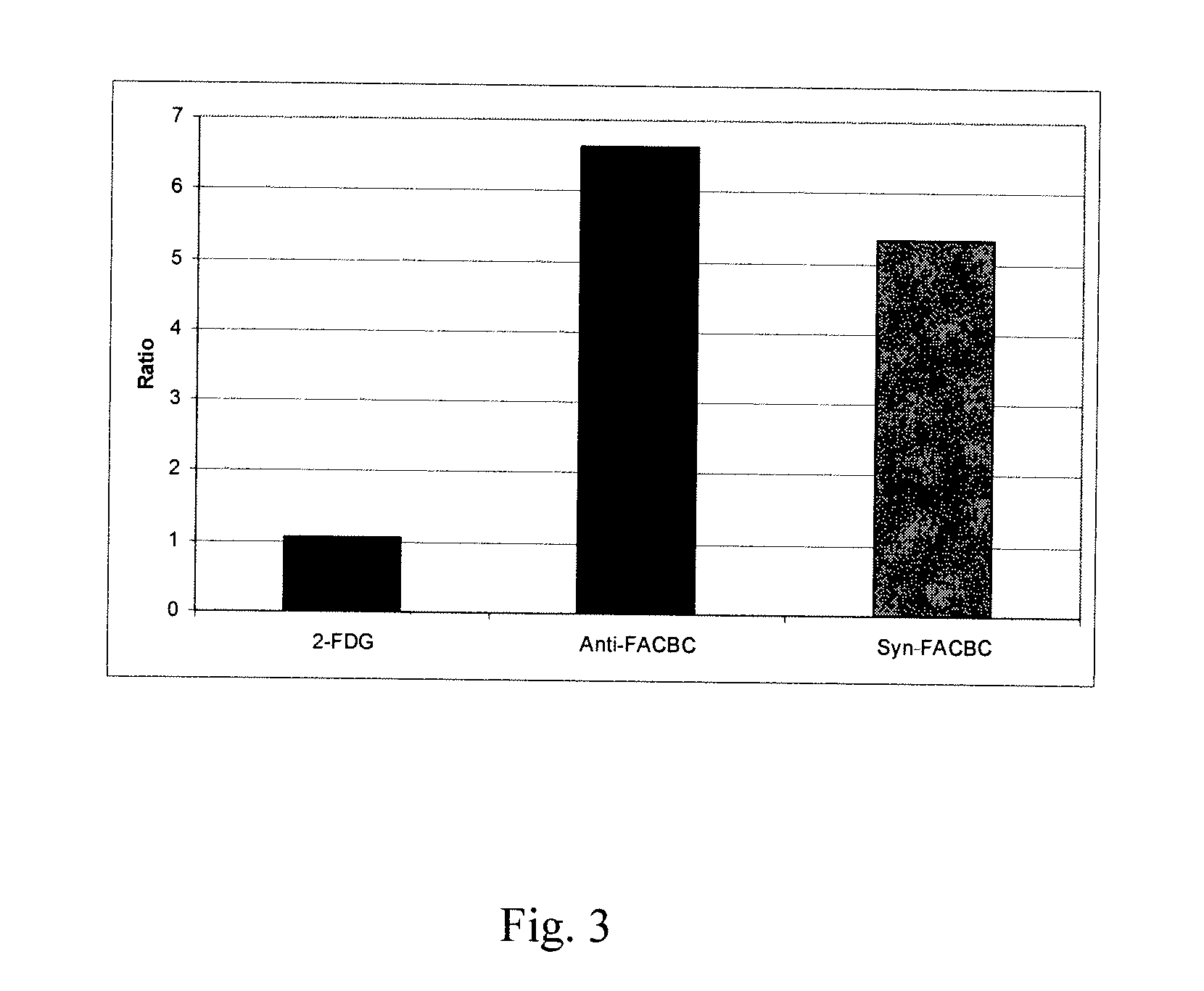Stereoselective Synthesis of Amino Acid Analogs for Tumor Imaging
- Summary
- Abstract
- Description
- Claims
- Application Information
AI Technical Summary
Benefits of technology
Problems solved by technology
Method used
Image
Examples
example 1
Synthesis of syn- and anti-[18F]1-amino-3-fluorocyclobutane-1-carboxylic acid (FACBC) (Schemes 1, 2 and 5)
[0047] The following methods were employed in procedures reported herein. [18F]-Fluoride was produced from a Seimens cyclotron using the 18O(p,n)18F reaction with 11 MeV protons on 95% enriched [18O] water. All solvents and chemicals were analytical grade and were used without further purification. Melting points of compounds were determined in capillary tubes by using a Buchi SP apparatus. Thin-layer chromatographic analysis (TLC) was performed by using 250-mm thick layers of silica gel G PF-254 coated on aluminum (obtained from Analtech, Inc. Newark, Del.). Column chromatography was performed by using 60-200 mesh silica gel (Sigma-Aldrich, St. Louis, Mo.). Infrared spectra (IR) were recorded on a Beckman 18A spectrophotometer with NaCl plates. Proton nuclear magnetic resonance spectra (1H NMR) were obtained at 300 MHz with a Nicolet high-resolution instrument.
Synthesis of 1...
example 2
Synthesis of syn- and anti-1-amino-4-hydroxycyclohexane-1-carboxylic acid esters (Schemes 7-9)
4-Ethylene acetal cyclohexanol (16)
[0060] To a solution of 1,4-cyclohexanedione monoethylene acetal (3.41 g, 21.8 mmol) in 50 ml methanol cooled to 0° C. was added sodium borohydride (0.826 g, 21.8 mmol) in portions. The reaction was stirred for an additional 1.5 hr before being brought to pH 7 by the addition of 1 N HCl. The mixture was partitioned between ethyl acetate and brine. The aqueous layer was concentrated to the point that a precipitate began to form and this layer was extracted twice with ethyl acetate. The combined organic layers were dried over sodium sulfate, filtered and concentrated. This crude alcohol (3.28 g, 95.2%) was used without further purification. 1H NMR (CDCl3) δ: 1.54-1.87 (8H, m, 4×-CH2—), 3.77 (1H, m, —CH—), 3.91 (4H, t, 2×O—CH2—).
1-Ethylene acetal-4-benzyloxy-cyclohexane (17)
[0061] To a suspension of sodium hydride (410 mg, 17.1 mmol) in 15 ml THF at 0° ...
example 3
Amino Acid Uptake Assays in Vitro and in Vivo
[0079] The tumor cells were initially grown as monolayers in T-flasks containing Dulbecco's Modified Eagle's Medium (DMEM) under humidified incubator conditions (37° C., 5% CO2 / 95% air). The growth media were supplemented with 10% fetal calf serum and antibiotics (10,000 units / ml penicillin and 10 mg / ml streptomycin). The growth media were replaced three times per week, and the cells were passaged so the cells would reach confluency in a week's time.
[0080] When the monolayers were confluent, cells were prepared for experimentation in the following manner. Growth media were removed from the T-flask, and the monolayer cells were exposed to 1× trypsin:EDTA for ˜1 minute to weaken the protein attachments between the cells and the flask. The flask was then slapped, causing the cells to release. Supplemented media were added to inhibit the proteolytic action of the trypsin, and the cells were aspirated through an 18 Ga needle until they were ...
PUM
| Property | Measurement | Unit |
|---|---|---|
| Affinity | aaaaa | aaaaa |
| Distribution | aaaaa | aaaaa |
Abstract
Description
Claims
Application Information
 Login to View More
Login to View More - R&D
- Intellectual Property
- Life Sciences
- Materials
- Tech Scout
- Unparalleled Data Quality
- Higher Quality Content
- 60% Fewer Hallucinations
Browse by: Latest US Patents, China's latest patents, Technical Efficacy Thesaurus, Application Domain, Technology Topic, Popular Technical Reports.
© 2025 PatSnap. All rights reserved.Legal|Privacy policy|Modern Slavery Act Transparency Statement|Sitemap|About US| Contact US: help@patsnap.com



